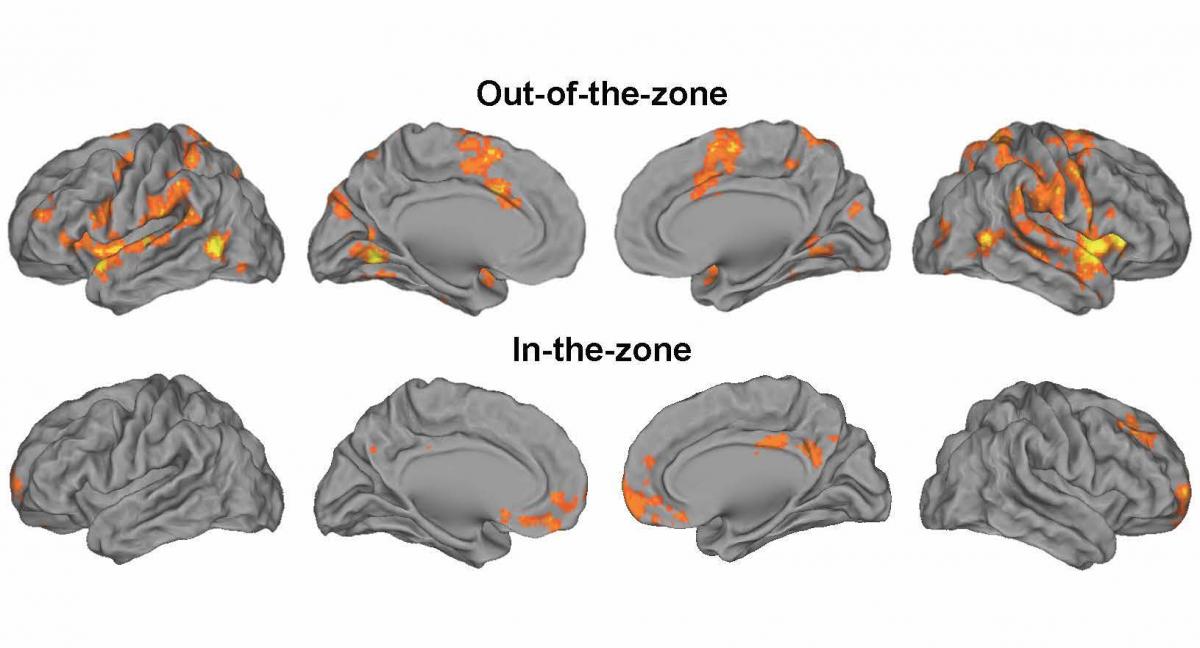The Daily Free Press recounts the HUBWeek event in which Center Director Bruce Rosen and medical illustrator Danny Quirk spoke about the intersectionality of human anatomy and visual art.
The Neuroscience Of Paying Attention (Or Not)
 |
|
Martinos Center investigators are exploring neural processes associated with mind-wandering.
|
Do you find your thoughts straying—a lot—from whatever it is you need to be focusing on? If so, you’re not alone. Studies show that we spend 30 to 50 percent of our waking hours engaged in mind-wandering.
Researchers have been working to understand better why this happens, trying to uncover the brain mechanisms of mind-wandering. This can be difficult, though—not least because the studies typically rely on subjects telling the researchers when their thoughts begin to drift and this self-reporting is considerably slower than the underlying neural processes.
Now, the MGH Martinos Center’s Aaron Kucyi, working with colleagues from MGH and Harvard and Boston University, is studying other, related processes that can help to uncover the mechanisms of mind-wandering: processes the researchers refer to as attentional fluctuations.
In the course of our daily lives, we experience a natural ebb and flow in how well we’re paying attention to whatever it is we happen to be doing. One minute we’re in the zone, so to speak, highly focused on the task at hand. The next minute, well, the next minute we’re not.
Given how common these fluctuations are, though, we actually know very little about them from a neuroscience perspective. We can see spontaneous activity in people’s brains, said Kucyi, a postdoctoral fellow in the Center, but we don’t fully understand the dynamics at play. “We don’t know what patterns of neural activity are most relevant to ongoing changes in attention.”
In a paper published this week in the journal Cerebral Cortex, Kucyi and colleagues shed some light on this question.
 |
|
Brain activity patterns that reflect whether a person is in the zone or out of the zone
|
Using a new approach to study the ways in which a person’s attention naturally fluctuates between “in the zone” and “out of the zone,” the researchers showed that subtle shifts in the person’s attention were consistently mirrored in major changes in activity in networks generally held to comprise the brain’s attention system, as seen with functional MRI.
They also gleaned insights into the communication within and between these networks—known in neuroimaging circles as “dynamic functional connectivity.”
“We found that fluctuating interactions within and between attention networks reflected whether someone was in or out of the zone,” Kucyi said. “This is an important finding because it is well known that brain networks are constantly exchanging information spontaneously, but very little is known about how this communication relates to someone’s ongoing behavior and experience.”
Which brings us back to the question of mind-wandering.
Kucyi and colleagues reasoned that, because mind-wandering has been associated with fluctuations in attention, as in the out-of-the-zone states they explored in the Cerebral Cortex study, they could wield their new understandings of these states to probe neural processes related to mind-wandering. They are now doing this in a follow-up study.
The findings from the ongoing work will be illuminating, especially as new insights into the underlying brain dynamics would tell us about more than mind-wandering. “An understanding of the neural building blocks that make up our spontaneous thoughts could allow us to better address fundamental questions about human experience,” Kucyi said. Among these: questions like how do human thought patterns emerge? and how do people make decisions on a moment-to-moment basis?
Improving management of attention-deficit and other disorders
Uncovering the neural underpinnings of fluctuations in attention can also have implications for clinical care.
Attention and its role in everyday life come into play in almost all neurological and psychiatric conditions. With attention-deficit/hyperactivity disorder, for instance, people have trouble focusing and can get stuck in “out of the zone” states and in mind-wandering. Conversely, chronic pain can lead those who suffer to ruminate on their pain—behavior that involves cognitive processes reflected in the brain networks described in the just-published study and in Kucyi’s previous research.
Given this, deeper understandings of how the brain’s attention system works—on a fine-grained, moment-to-moment basis—could have a significant impact on care. Such understandings could be “critical to advancing our knowledge of these conditions,” said Eve Valera, the senior author of the Cerebral Cortex study and an ADHD expert, “and to developing more individualized treatment approaches.”
Additional authors on the study include Michael Hove, Michael Esterman, and R. Matthew Hutchison.


